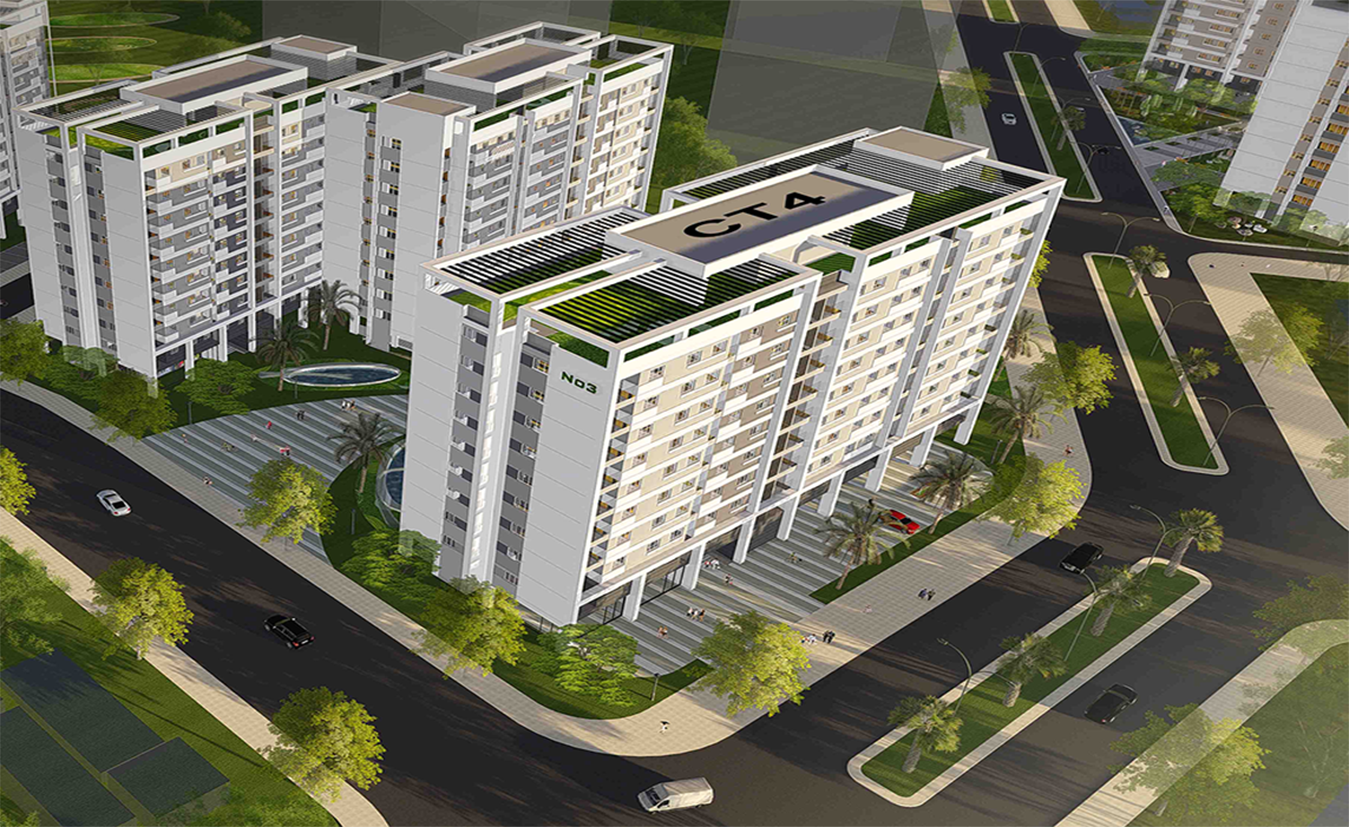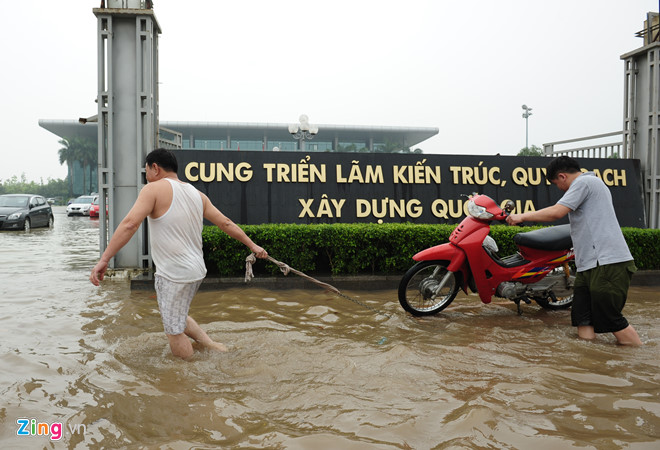The transportation infrastructure system and transport network of the Capital are currently revealing many inadequacies, not keeping up with the pace of population, economic, and social development. On March 31, 2016, the Prime Minister of the Government of Vietnam signed Decision 519/QD-TTg on the Approval of the Transport Planning for Hanoi Capital until 2030 with a vision to 2050, aiming to complete the transportation system connecting nearly ten urban railway lines, closing the ring roads, constructing numerous river overpasses...

Master Plan Map of the Comprehensive Transportation Network of Hanoi by 2030, Vision to 2050
Hanoi Transportation Planning is a very detailed, scientific, and feasible planning project; when implemented, it will significantly impact the development not only of Hanoi but also of the entire Capital Region, the Northern economic area, and the whole country. The plan outlines several key contents as follows:
Road Transportation Infrastructure Planning
The road infrastructure includes the external road network; the suburban road network; the urban road network; intersections; bridges and tunnels across the Red River, Duong River, Da River, and Day River.
- The external road network includes highways, national highways, and interregional ring roads.- The suburban road network:- Construction of new roads connecting the central urban area, including: (1) West Thang Long axis from Ring Road 4 to the satellite city of Son Tay, approximately 20 km long; (2) West Lake - Ba Vi axis from Ring Road 4 to the satellite city of Hoa Lac, approximately 25 km long; (3) Ha Dong - Xuan Mai axis from Ring Road 4 to the satellite city of Xuan Mai, approximately 20 km long; (4) Ngoc Hoi - Phu Xuyen axis from Ring Road 4 to the satellite city of Phu Xuyen, approximately 25 km long;- Construction of 31 provincial and inter-district roads with significant transportation importance based on existing provincial roads and adding new axes including: North-South economic development road; Southern economic development road connected with Bai Dinh - Ba Sao road; Do Xa - Quan Son road; Chuc Son - Mieu Mon - Huong Son road...- The urban road network includes the central urban area and satellite cities.- Renovation and construction of 185 grade-separated intersections between highways, primary urban roads, and secondary roads, including: 130 intersections in the central urban area; 4 intersections in the Son Tay satellite city; 7 intersections in the Hoa Lac satellite city; 4 intersections in the Xuan Mai satellite city; 6 intersections in the Phu Xuyen satellite city; 5 intersections in the Soc Son satellite city; and 29 intersections in other areas.- Bridges and tunnels across the Red River, Duong River, Da River, and Day River:- Construction of 18 roadway projects crossing the Red River within the Hanoi area, including six existing bridges: Thang Long, Chuong Duong, Vinh Tuy (phase 1), Thanh Tri, Nhat Tan, and Vinh Thinh; upgrading Long Bien bridge into a road-only bridge; construction of new bridges and tunnels including: Hong Ha Bridge, Me So Bridge (Ring Road 4), new Thang Long Bridge (Ring Road 3), Tu Lien Bridge, Vinh Tuy Bridge (phase 2), Thuong Cat Bridge, Ngoc Hoi Bridge (Ring Road 3.5), Tran Hung Dao Tunnel/Bridge, Phu Xuyen Bridge on the Northwest Expressway - National Highway 5, Van Phuc Bridge (North-South axis connecting with Vinh Phuc province for inter-provincial traffic), Viet Tri - Ba Vi Bridge connecting National Highway 32 to National Highway 32C within the territory of Hanoi and Phu Tho province.- Construction of 8 bridges across Duong River, including 4 existing bridges (Duong Bridge for both rail and road, Phu Dong 1 and Phu Dong 2 bridges on Ring Road 3, Dong Tru Bridge on the extended Road 5); 4 new bridges including: new Duong Bridge (road bridge), Giang Bien Bridge on the extended road from Long Bien district to Ninh Hiep, Mai Lam Bridge (on the extended road from Long Bien district to Co Loa town center), Ngoc Thuy Bridge (on the road along Red River's left dyke).- Bridges across the Da River include: existing Trung Ha Bridge, new Trung Ha Bridge on the Western Highway, Dong Quang Bridge.- Construction of bridges across the Day River include: Thanh Da Bridge (West Thang Long axis), Phung Bridge (National Highway 32), Day River Bridge (Thang Long Avenue), Mai Linh Bridge (National Highway 6), Dong Hoang Bridge (Ha Dong - Xuan Mai axis), Hoang Thanh Bridge (Thanh Oai district axis), My Hoa Bridge (connecting My Duc - Ung Hoa), Hoa Vien Bridge (connecting Ung Hoa - Chuong My), Day River Bridge (Do Xa - Quan Son road), bridges on the Northwest Expressway - National Highway 5... The bridge scales are appropriate with the flood discharge system of the Day River.- On other rivers: Construction of bridges systematically in line with planned road scales.

Hanoi Will Have an Additional Second International Airport
According to the Hanoi Transportation Master Plan by 2030, with a vision to 2050, Hanoi will have a total of 5 airports by 2050, including 2 international airports. Specifically:
- Noi Bai International Airport: Renovate and upgrade Noi Bai International Airport to become the largest international airport in Northern Vietnam with the following phases:- By 2020: Level 4E airport according to ICAO (International Civil Aviation Organization) standards, with a passenger capacity of 20 - 25 million passengers/year and over 260,000 tons of cargo/year;- By 2030: Level 4F airport capable of handling 35 million passengers/year and after 2030, 50 million passengers/year, 500,000 tons of cargo/year.- Gia Lam Airport: Dual-use for short-range domestic civil use and military use. Level 3C airport and Level II military airport, with 2 runways of 2000m x 45m. Passenger capacity: 290,000 passengers/year.- Hoa Lac, Mieu Mon Airports: Serve military purposes, can accommodate civil use when required.- Bach Mai Airport: Rescue and helicopter airport.- The second international airport for the Capital Region will be oriented in the Capital Region planning.

Investment of 1,235,380 billion VND to Implement the Plan
The total investment to complete the proposed plan is 1,235,380 billion VND, including 523,777 billion VND for roads, 646,525 billion VND for railways, 19,750 billion VND for waterways, and 45,329 billion VND for aviation.
Diversification of investment sources:
- State budget funds.- Funds from city revenue dedicated to transportation development.- Private investment funds.- Attract domestic and foreign investment sources through specific ODA project loans, and issuance of construction bonds for the Capital.
For detailed content of Hanoi's transportation planning, refer to Decision 519/QD-TTg.
 Article table of contents
Article table of contents





.Medium.png)
.Medium.png)
.Medium.png)
.Medium.png)
